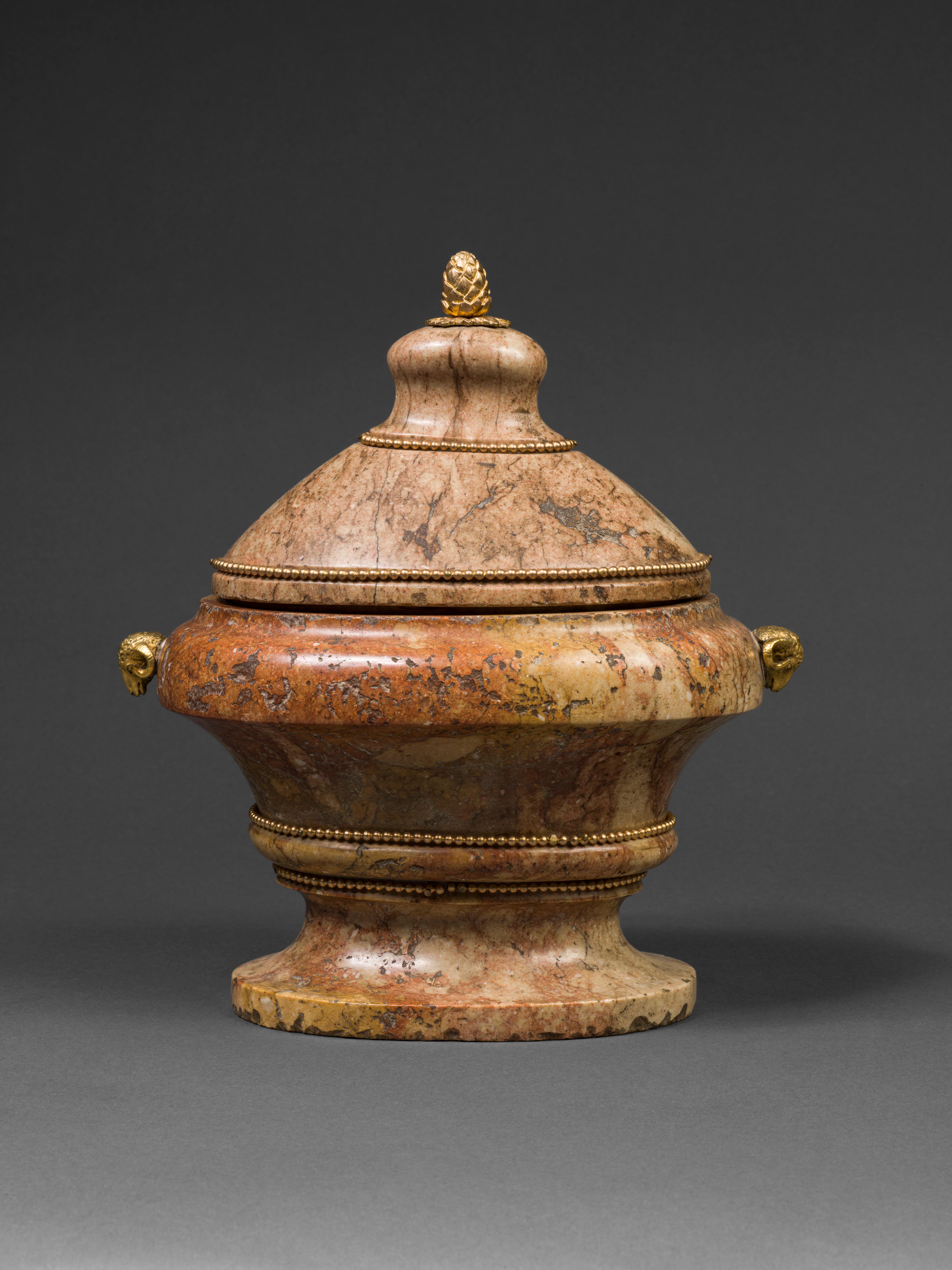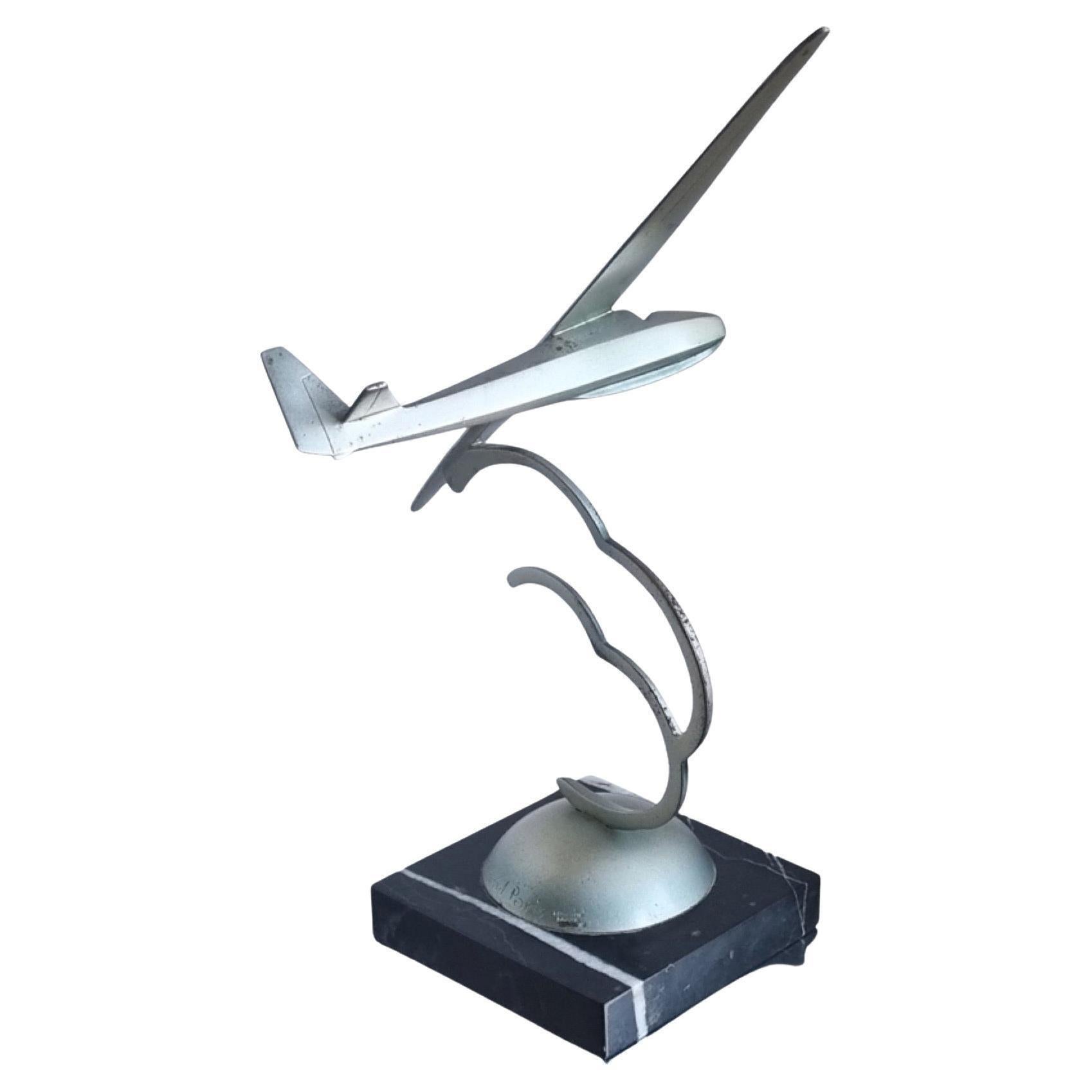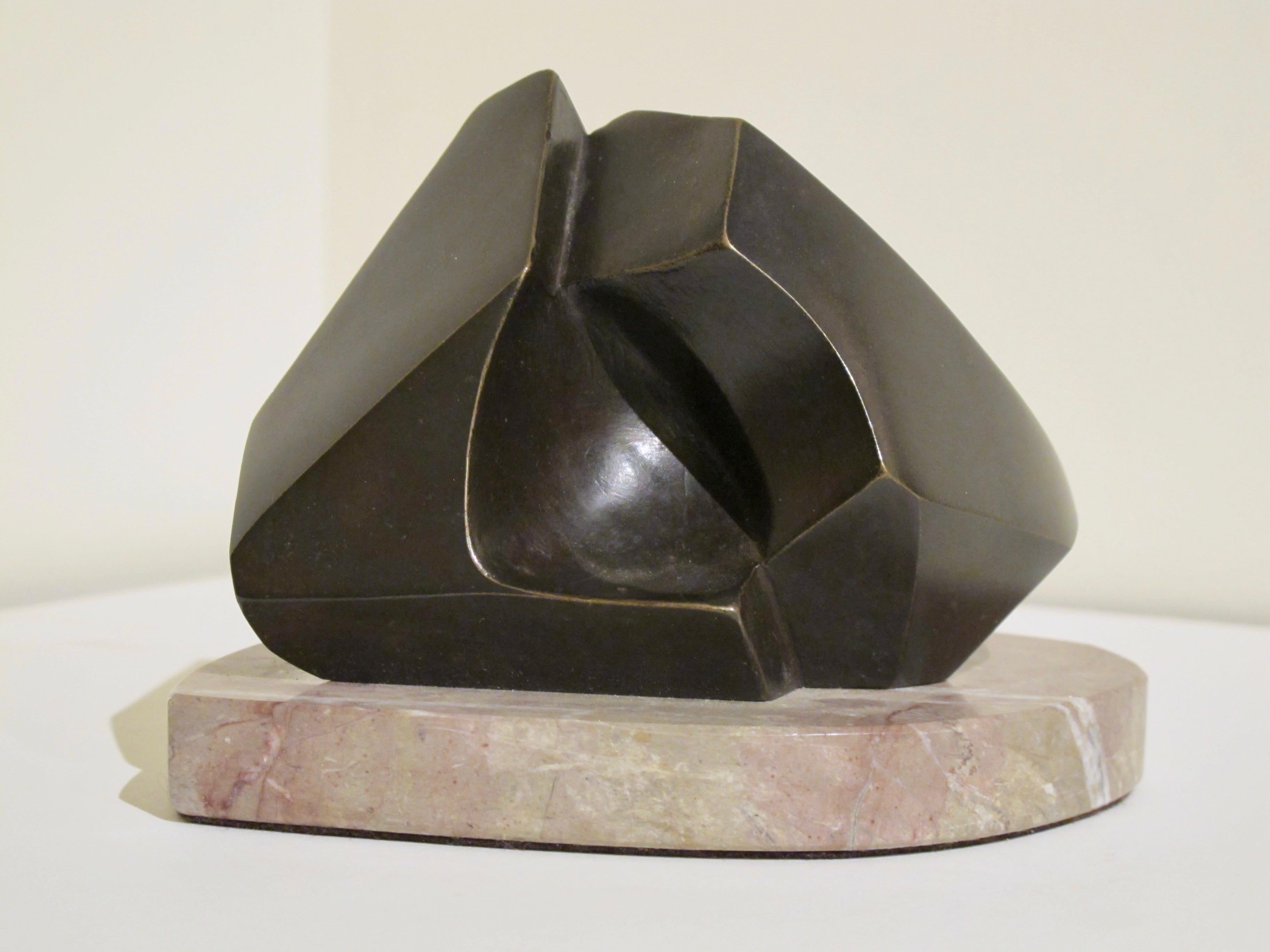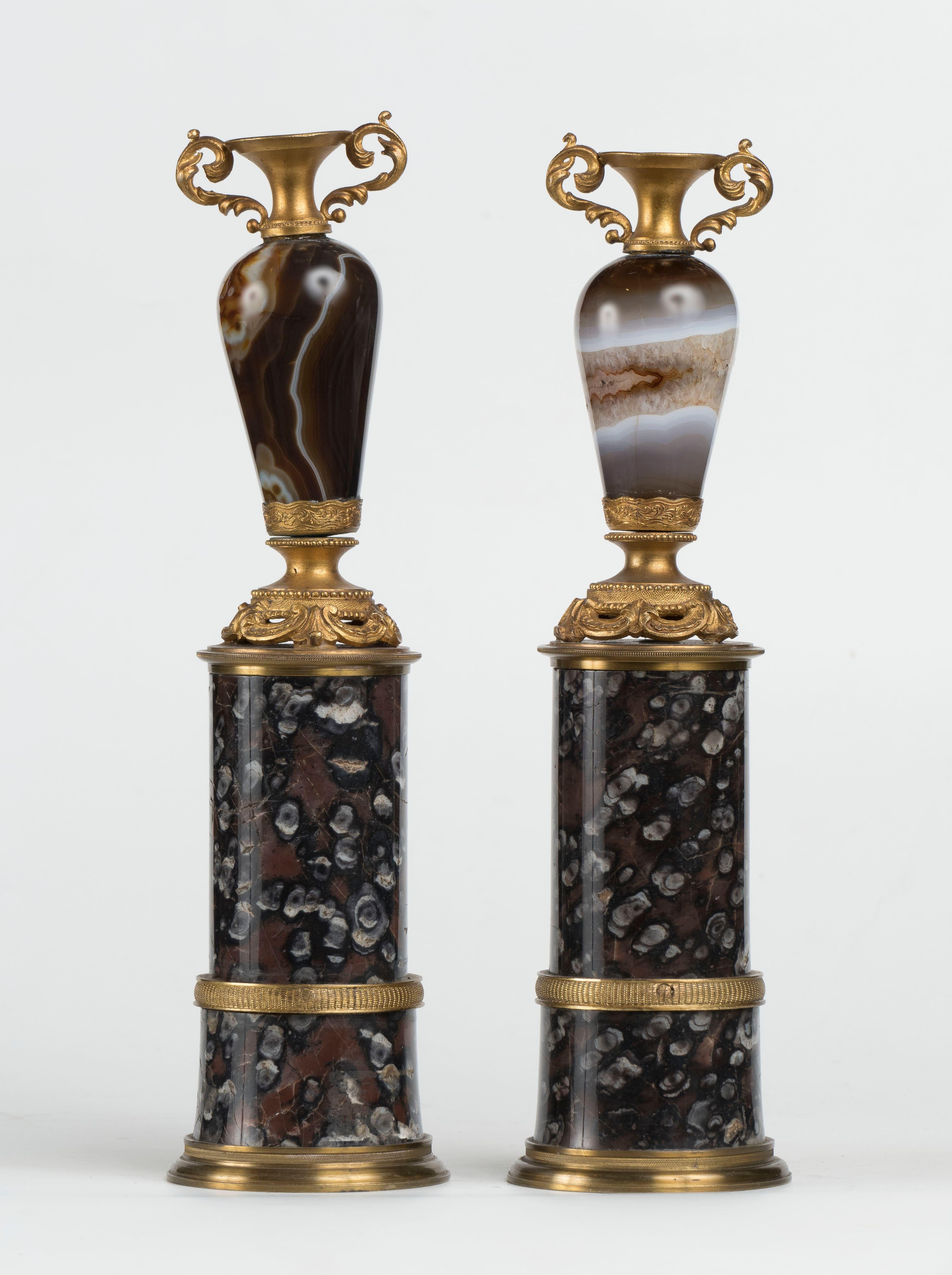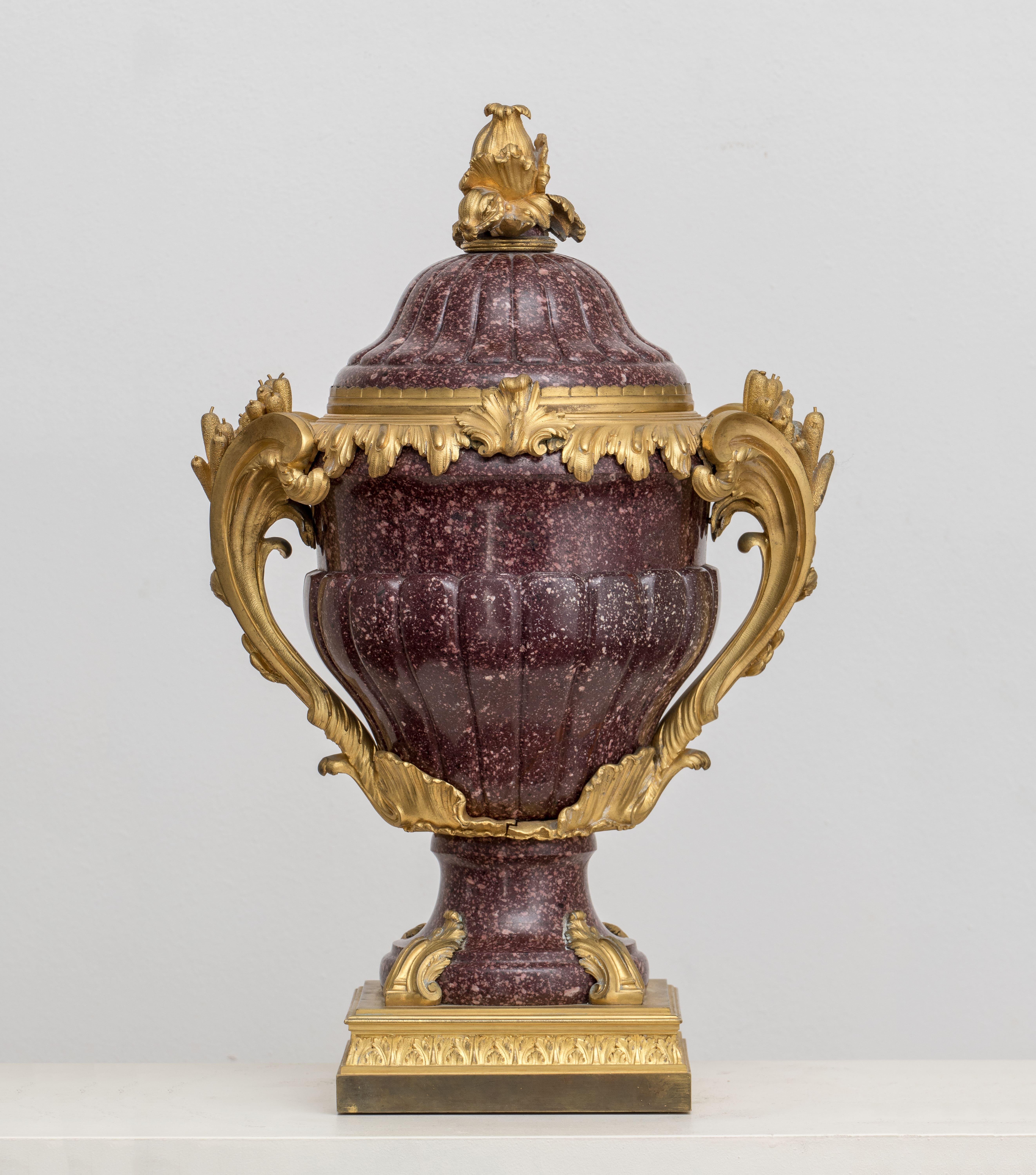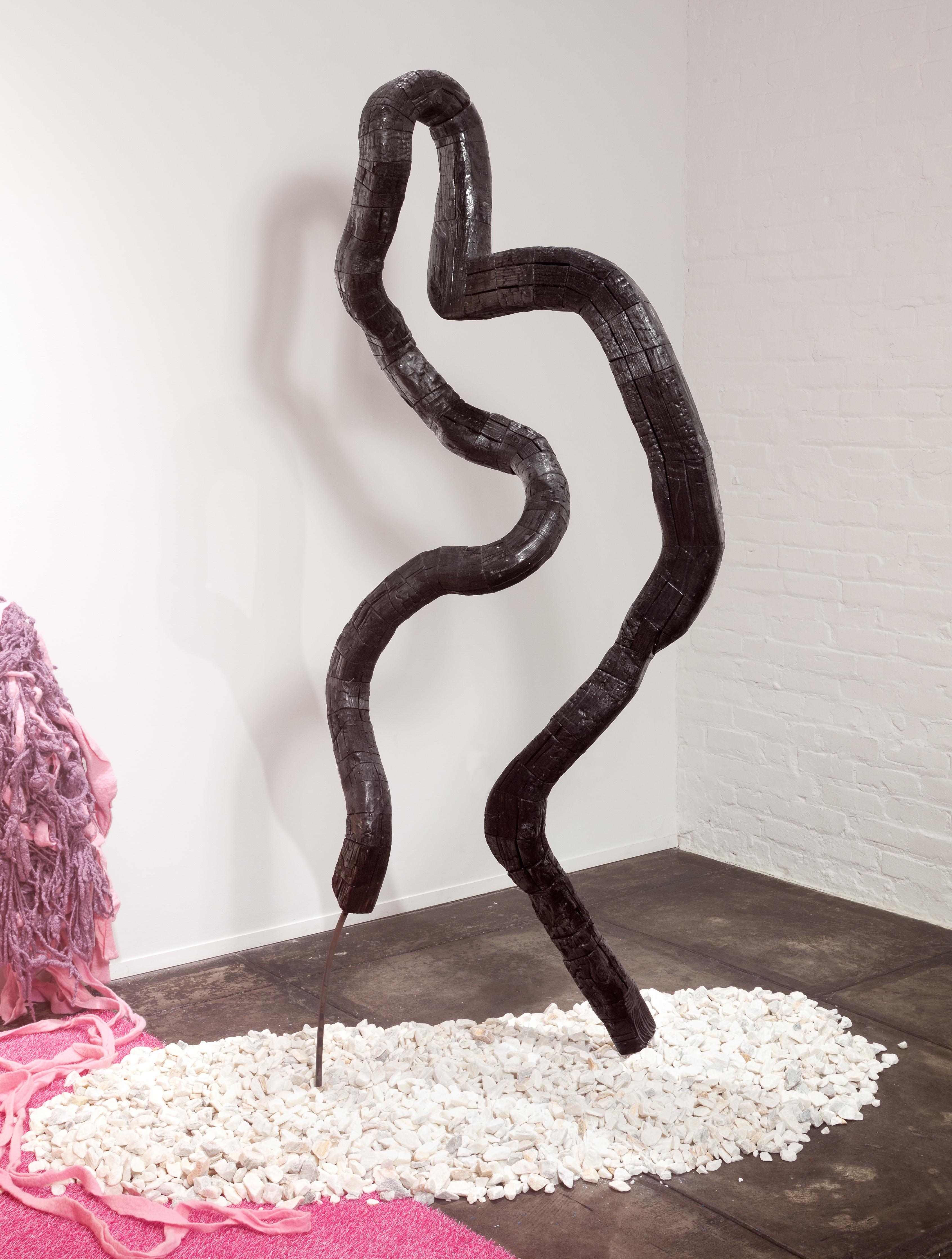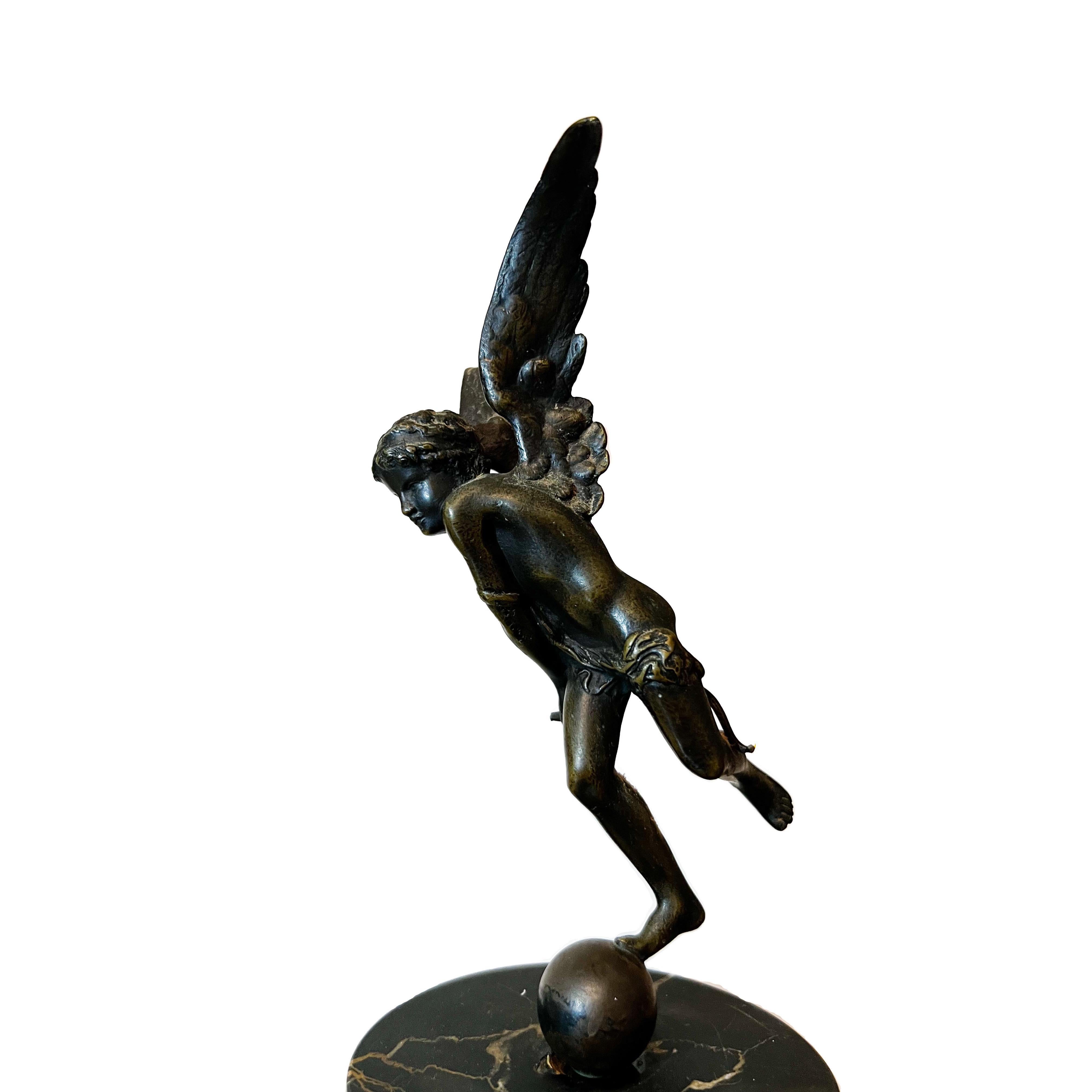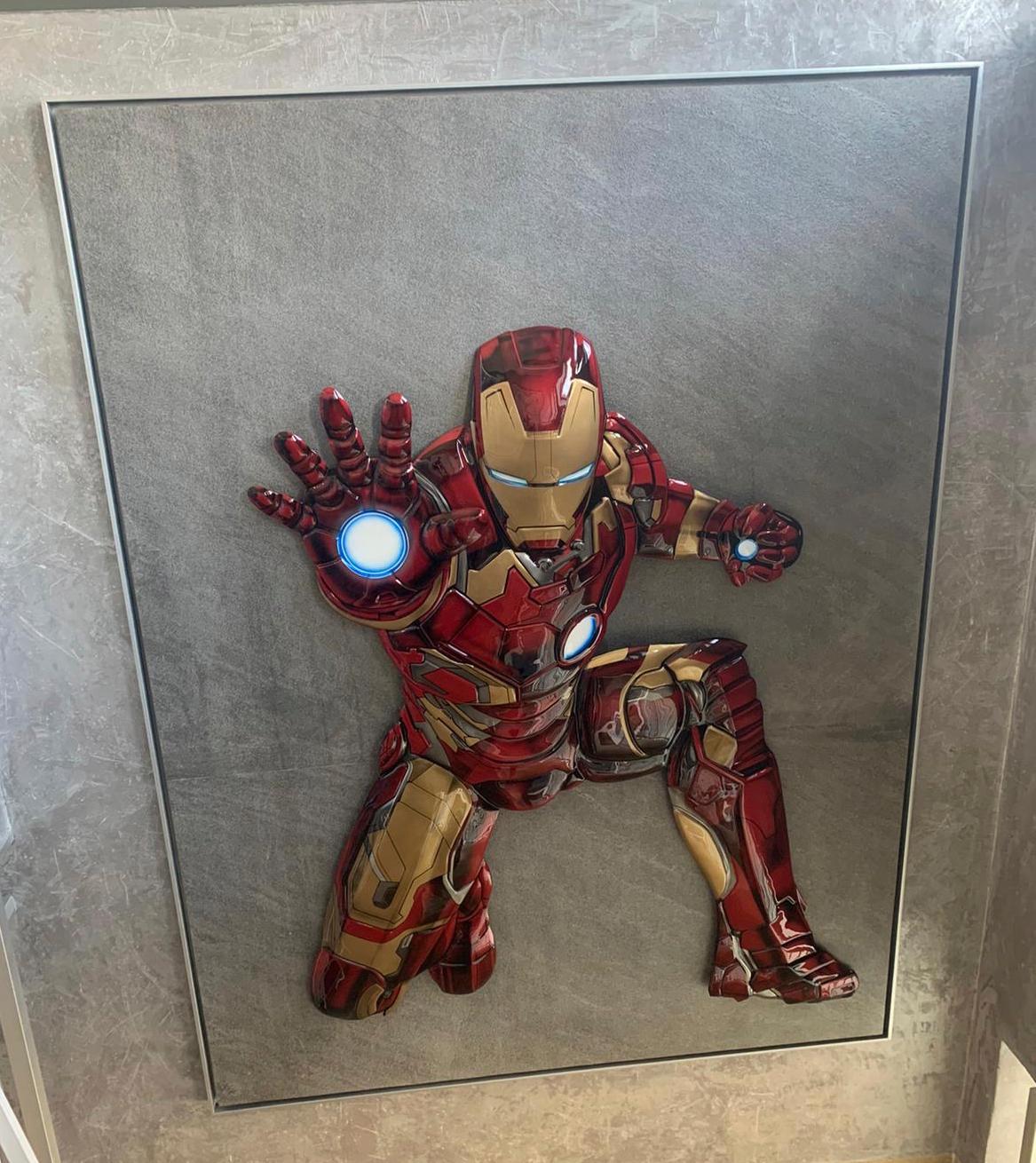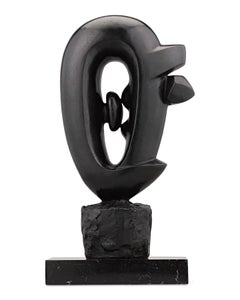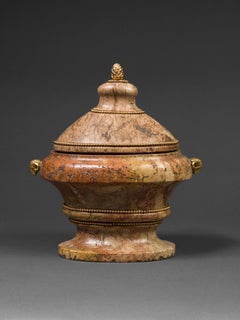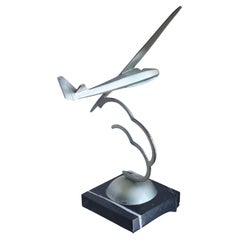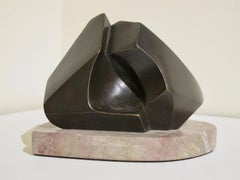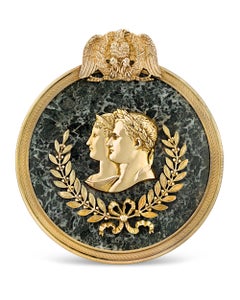
Bronze and Marble Relief Plaque of Napoléon and Marie-Louise
View Similar Items
Want more images or videos?
Request additional images or videos from the seller
1 of 5
UnknownBronze and Marble Relief Plaque of Napoléon and Marie-LouiseEarly 19th century
Early 19th century
About the Item
- Creation Year:Early 19th century
- Dimensions:Height: 11.13 in (28.28 cm)Width: 9.75 in (24.77 cm)Depth: 0.75 in (1.91 cm)
- Medium:
- Period:
- Condition:
- Gallery Location:New Orleans, LA
- Reference Number:Seller: 31-36131stDibs: LU18611293642
About the Seller
5.0
Vetted Seller
These experienced sellers undergo a comprehensive evaluation by our team of in-house experts.
Established in 1912
1stDibs seller since 2013
14 sales on 1stDibs
Typical response time: 4 hours
More From This SellerView All
- CoupleBy Agustín CárdenasLocated in New Orleans, LAInfused with a crisp modernity and subtle sensuality, this bronze sculpture by Cuban-born artist Agustin Cárdenas is an exceptional example of late-2...Category
20th Century Modern Figurative Sculptures
MaterialsMarble, Bronze
- La Pensée Volante (The Flying Thought)By Agustín CárdenasLocated in New Orleans, LAThis striking conceptualization of "a flying thought" was composed by the famed Cuban-born artist Agustin Cárdenas. Entitled La Pensée Volante (The Fl...Category
19th Century Modern Abstract Sculptures
MaterialsMarble, Bronze
- THE LAST DAYS OF NAPOLÉON BYLocated in New Orleans, LAThis highly evocative bronze by Vincenzo Vela captures the deposed Emperor Napoléon on his deathbed, holding a map of Europe and lost in thought about what might have been. Remarkable among most portrayals of the exiled leader, this highly detailed sculpture depicts Napoléon at his most vulnerable. Nonetheless, Vela perfectly captures his still-heroic bearing, which imparts to this work a monumental quality and quiet dignity. The mate to this figure is the colossal marble at the Musée du Château de Malmaison, which was shown at the Paris Salon of 1867. The founder of the verismo movement in Italy, Vela was one of the great exponents of realism in sculpture. Born in Ligornetto, Switzerland in 1820, he studied under celebrated sculptor, Benedetto Cacciatori. He was also influenced both by the work of Tuscan sculptor Lorenzo Bartolini, who seamlessly combined neoclassicism with naturalism and the romantic painting of Francesco Hayez...Category
19th Century Realist Figurative Sculptures
MaterialsMarble, Bronze
- Pietre Dure Plaque Of Village ChildrenLocated in New Orleans, LAMagnificent and colorful, this enchanting Florentine work of art is not a painting, but upon closer inspection is revealed to be a superb example of the intensive art of pietre dure....Category
19th Century More Art
MaterialsStone, Marble
- Bust of Pope Innocent XI Odescalchi by Domenico GuidiLocated in New Orleans, LAThis monumental bust is a museum-quality example of Roman Baroque sculpture. Crafted by the legendary Domenico Guidi and carved from Carrara marble, the impressive portrait captures the visage of Pope Innocent XI, Benedetto Odescalchi (1611-1689). It presents a larger-than-life example of Guidi’s remarkable skill as a sculptor, which ultimately made his workshop one of the most important in Rome during his age. Today, his works are rarely found on the market, particularly his extraordinary works in marble. Pope Innocent XI was born Benedetto Odescalchi into an Italian noble family of prominent bankers. Spending his early years in banking, he eventually turned to the law, earning his doctorate in 1639. His background would serve him well in his service to the papacy, and he became known as a frugal and devout member of the Church. In 1676, he was unanimously elected Pop after the death of Clement X. During his nearly 13-year reign, he instilled his own personal ideals of austerity and frugality onto the Church, with a deep commitment to reform and piety. He is captured here by Guidi in his traditional Pope’s mozzetta and camauro cap. A wide stole is draped over his shoulders, ornamented by acanthus leaves and the coat of arms of the Odescalchi family. It displays Guidi’s mastery over the chiaroscuro effect, particularly in the high level of contrast in his cheeks and his eyes, which Guidi achieved through various methods of high polish. A very similar portrait sculpture of Pope Innocent XI by Guidi can be found in the collection of the Royal Castle in Warsaw. The Warsaw bust belongs to a series of portraits of popes which the Odescalchi family commissioned from Domenico Guidi in the 1690s. Compared to that example, the present bust is far more dramatic, with deeper cut lines and a more precise expression. It is likely that the present piece was seen by the Odescalchi family, who ordered a similar one to be made. The piece was almost certainly intended to be displayed in a niche, given its dramatic cutting and its roughly carved back. Others of Guidi’s busts can be found in important collections throughout Italy, England and the United States, though many of these are lesser bronze repetitions. A bronze bust of the Pope Alexander VIII by Guidi is currently in the collection of the Victoria & Albert Museum (London), while a terracotta version of the same is in the Los Angeles County Museum. A bronze of Pope Alexander VIII can be found in the Princely Collection of Lichtenstein, and his impressive marble papal bust of Clement IX graces the pope’s tomb in Santa Maria Maggiore. The present bust of Pope...Category
17th Century Baroque Figurative Sculptures
MaterialsMarble
- Italian Marble Sculpture Of Venus And CupidLocated in New Orleans, LABeautifully detailed and lifelike, Venus and Cupid share a soft embrace in this remarkable Italian white marble sculpture. The feminine beauty gracefully leans against roughened rock...Category
19th Century Nude Sculptures
MaterialsMarble
You May Also Like
- 18th Century Italian Pink Marble Urn with lid and bronze mountsLocated in Milan, ITTypical of 18th Century Rome, this fascinating pink marble urn with lid is a wonderful example of Italian decorative arts. Embellished with bronze moun...Category
Mid-18th Century More Art
MaterialsMarble, Bronze
- Roland Paris Bronze Statue Glider 1933 Schneider Grunau Baby GliderLocated in Oakland, CARoland Paris Bronze Statue Glider 1933. This glider was originally based on the Schneider Grunau Baby Glider from 1931. It held the world record fo...Category
1930s Art Deco More Art
MaterialsMarble, Bronze
- Abstract Geometric, small abstract bronze, dark brown patina, life cast, marbleBy Allan HouserLocated in Santa Fe, NMAbstract Geometric, small abstract bronze, dark brown patina, life cast, marble limited edition Allan Houser (Haozous), Chiricahua Apache (1914-1994) Selec...Category
1980s Contemporary Abstract Sculptures
MaterialsMarble, Bronze
- Three Girls Bronze Relief Sculpture Plaque Chaim Gross Modernist WPA Era ArtistBy Chaim GrossLocated in Surfside, FLChaim Gross Three little girls, three Graces. 1981. Bronze sculptural relief plaque mounted to verdigris marble. signed and dated on marble Marble approx 7.5" x 7" x 1.5". Bronze: 5.25" x 4" x 1" Chaim Gross, born in Wolowa, Austria in 1904, was educated at the Beaux Arts Institute of Design and at the Art Student's League in New York. Chaim Gross's work was greatly influenced by his experiences during a period of international conflict, World War II. He had moved to Kolomyia from Wolowa to get a better education, but the Germans came to occupy, killing, raping, and looting. Gross and his family were chased from one village to the next. He wrote, "We were sleeping on roofs and in the fields, with the sound of cannon fire always in the distance,". Eventually, he ended up in Budapest with his two brothers, where Anti Semitism was not as severe, and that is where he began to sculpt and draw. He even had a few odd jobs there as a gold and silversmith. When he was seventeen, Gross immigrated to America where his older brother was. There he was a student and then a teacher at the Educational Alliance on the Lower East Side. Teaching became a big part of his philosophy, as he believed that an artist must pass on the knowledge which he had received from others in his artwork. He was part of an artist emigre community which included Raphael Soyer, Moses Soyer, Arnold Newman, Max Weber and David Burliuk. His daughter is the artist Mimi Grooms and his son in law was Red Grooms. Chaim Gross works reflect his Jewish and Austrian roots and his Hasidic Jewish upbringing. The figures in his art reflect the Hasidic spirit of being happy and making other people happy. This opiece has children playing and is perfect for a kids room. In his pieces, Jews sing and dance in celebration of the Jewish Sabbath and festivals. They are shown rejoicing in the great gifts of love and life. Chaim Gross was honored with a number of prestigious awards including: the Award of Merit Medal from the National Institute of Arts and Letters in 1963, and the Gold Medal award from the National Academy of Design in 1985. He often used his creative abilities to explore and experiment with media. In his artwork he retains an optimistic philosophy, even when facing somber issues such as war, depression, and the Holocaust. Gross was born to a Jewish family in Austrian Galicia, in the village of Wolowa (now known as Mezhgorye, Ukraine), in the Carpathian Mountains. In 1911, his family moved to Kolomyia (which was annexed into the Ukrainian USSR in 1939 and became part of newly independent Ukraine in 1991). When World War I ended, Gross and brother Avrom-Leib went to Budapest to join their older siblings Sarah and Pinkas. Gross applied to and was accepted by the art academy in Budapest and studied under the painter Béla Uitz, though within a year a new regime under Miklos Horthy took over and attempted to expel all Jews and foreigners from the country. After being deported from Hungary, Gross began art studies at the Kunstgewerbeschule in Vienna, Austria shortly before immigrating to the United States in 1921. Gross's studies continued in the United States at the Beaux-Arts Institute of Design, where he studied with Elie Nadelman and others, and at the Art Students League of New York, with Robert Laurent. He also attended the Educational Alliance Art School, studying under Abbo Ostrowsky, at the same time as Moses Soyer and Peter Blume. In 1926 Gross began teaching at The Educational Alliance, and continued teaching there for the next 50 years. Louise Nevelson was among his students at the Alliance (in 1934), during the time she was transitioning from painting to sculpture. In the late 1920s and early 1930s he exhibited at the Salons of America exhibitions at the Anderson Galleries and, beginning in 1928, at the Whitney Studio Club. In 1929, Gross experimented with printmaking, and created an important group of 15 linocuts and lithographs of landscapes, New York City streets and parks, women in interiors, the circus, and vaudeville. The entire suite is now in the collection of the Philadelphia Museum of Art. Gross returned to the medium of printmaking in the 1960s, and produced approximately 200 works in the medium over the next two decades. In March 1932 Gross had his first solo exhibition at Gallery 144 in New York City. For a short time they represented Gross, as well as his friends Milton Avery, Moses Soyer, Ahron Ben-Shmuel and others. Gross was primarily a practitioner of the direct carving method, with the majority of his work being carved from wood. Other direct carvers in early 20th-century American art include William Zorach, Jose de Creeft, and Robert Laurent. Works by Chaim Gross can be found in major museums and private collections throughout the United States, with substantial holdings (27 sculptures) at the Hirshhorn Museum and Sculpture Garden. A key work from this era, now at the Smithsonian American Art Museum, is the 1932 birds-eye maple Acrobatic Performers, which is also only one and one quarter inch thick. In 1933 Gross joined the government's PWAP (Public Works of Art Project), which transitioned into the WPA (Works Progress Administration), which Gross worked for later in the 1930s. Under these programs Gross taught and demonstrated art, made sculptures that were placed in schools and public colleges, made work for Federal buildings including the Federal Trade Commission Building, and for the France Overseas and Finnish Buildings at the 1939 New York World's Fair. Gross was also recognized during these years with a silver medal at the Exposition universelle de 1937 in Paris, and in 1942, with a purchase prize at the Metropolitan Museum of Art's "Artists for Victory" exhibition for his wood sculpture of famed circus performer Lillian Leitzel. In 1949 Gross sketched Chaim Weizmann, President of Israel, at several functions in New York City where Weizmann was speaking, Gross completed the bust in bronze later that year. Gross returned to Israel for three months in 1951 (the second of many trips there in the postwar years) to paint a series of 40 watercolors of life in various cities. This series was exhibited at the Jewish Museum (Manhattan) in 1953. In the 1950s Gross began to make more bronze sculptures alongside his wood and stone pieces, and in 1957 and 1959 he traveled to Rome to work with famed bronze foundries including the Nicci foundry. At the end of the decade Gross was working primarily in bronze which allowed him to create open forms, large-scale works and of course, multiple casts. Gross's large-scale bronze The Family, donated to New York City in 1991 in honor of Mayor Ed Koch, and installed at the Bleecker Street Park at 11th street, is now a fixture of Greenwich Village. In 1959, a survey of Gross's sculpture in wood, stone, and bronze was featured in the exhibit Four American Expressionists curated by Lloyd Goodrich at the Whitney Museum of American Art, with work by Abraham Rattner, Doris Caesar, and Karl Knaths. In 1976, a selection from Gross's important collection of historic African sculpture, formed since the late 1930s, was exhibited at the Worcester Art Museum in the show The Sculptor's Eye: The African Art Collection of Mr. and Mrs. Chaim Gross. Gross was elected into the National Academy of Design as an Associate member, and became a full Academician in 1981. In 1984, he was inducted into the American Academy of Arts and Letters, with Jacob Lawrence and Lukas Foss. In the fall of 1991, Allen Ginsberg gave an important tribute to Gross at the American Academy of Arts and Letters, which is published in their Proceedings. In 1994, Forum Gallery, which now represents the Chaim Gross estate, held a memorial exhibition featuring a sixty-year survey of Gross's work. Gross was a professor of printmaking and sculpture at both the Educational Alliance and the New School for Social Research in New York City, as well as at the Brooklyn Museum Art School, the MoMA art school, the Art Student's League and the New Art School (which Gross ran briefly with Alexander Dobkin, Raphael Soyer and Moses Soyer). Gross was a member of the New York Artists Equity Association and the Federation of Modern Painters and Sculptors. He was a founder and served as the first president of the Sculptors Guild. He is in the collections of the Museum of Modern Art; the Metropolitan Museum of Art; the Whitney Museum of American Art; the Philadelphia Museum of Art; the Art Institute of Chicago; the Tel Aviv Museum of Art, Israel.He is in the collections of the Museum of Modern Art; the Metropolitan Museum of Art; the Whitney Museum of American Art; the Philadelphia Museum of Art; the Art Institute of Chicago; the Tel Aviv Museum of Art, Israel. And the EIN HAROD Museum's Holdings: Israeli art is represented by the works of Reuven Rubin, Zaritzky, Nahum Gutman, Mordechai Ardon, Aharon Kahana, Arie Lubin, Yehiel Shemi, Yosl Bergner and others. The graphic arts collection contains drawings and graphic works by Pissaro, Amedeo Modigliani, Jules Pascin, Marc Chagall (almost all of his graphic work), and numerous other artists. The sculpture collection includes works by Jewish sculptors from all over the world including leading Israeli sculptors; Ben Zvi, Lishansky, David Palombo, Yehiel Shemi, Aharon Bezalel and Igael Tumarkin. Many Jewish sculptors from all parts of the world, beginning with Mark Antokolsky, are represented in the collection. In the sculpture courtyard there are works by Chana Orloff, Jacob Epstein (the works he bequeathed to the Museum), Enrico Glicenstein, Loutchansky, Joseph Constant and Leon Indenbaum from Western Europe; Glid from Yugoslavia; William Zorach, Chaim Gross and Minna Harkavy from the United States; and most of the outstanding sculptors of Israel : Zeev Ben-Zvi, Lishansky, Ziffer, Rudi Lehmann, Dov Feigin, Sternschuss, David Palombo ( who executed the iron...Category
Mid-20th Century Modern More Art
MaterialsMarble, Bronze
- Neolithic Implements-original abstract sculpture-artwork -contemporary ArtLocated in London, Chelsea"Neolithic Implements" by David Sprakes is an original table-top marble sculpture that channels the essence of ancient tools and artifacts. Crafted in marble and presented in a limit...Category
21st Century and Contemporary Modern Sculptures
MaterialsMarble, Bronze
- PAIR OF FRENCH MOUNTED PIETRA DURA URNS, 19TH CENTURYLocated in Milan, ITPAIR OF PIETRA DURA MOUNTED URNS France, 18th and 19th Century Amethyst and breccia pavonazzetto height 24.5 cm height 9 3/4 inCategory
18th Century More Art
MaterialsMarble, Bronze
